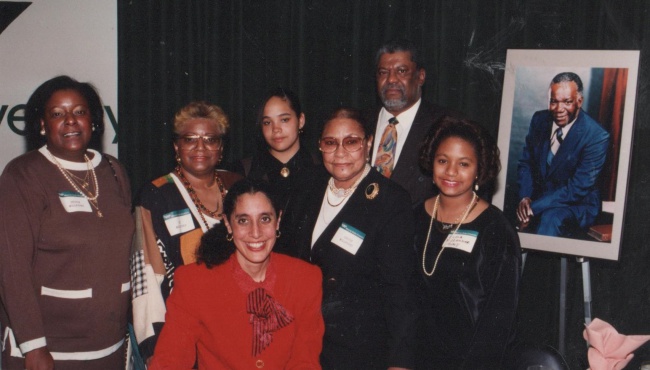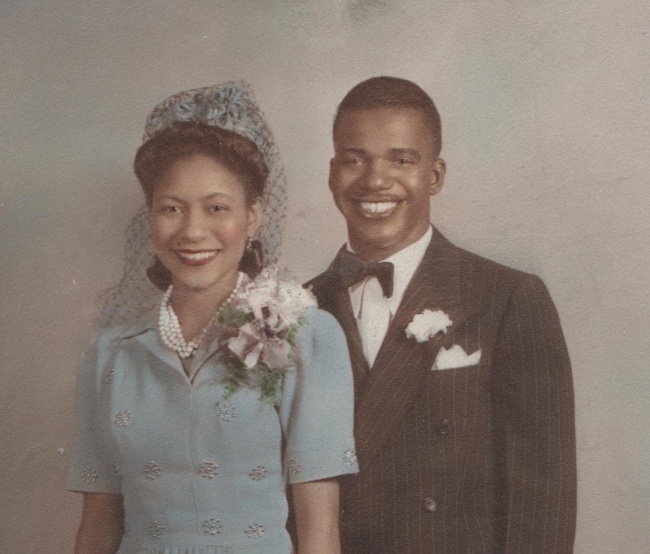
During the early days of the historic 1964 John Conyers Jr. campaign for the U.S. House of Representatives, volunteers would talk often about a man who would enter the office during the wee hours of the morning and empty trash cans, remove scraps from tables and tidy up bathrooms.
As days turned into weeks, they were eager to meet him. They understood that his name was Bob but they had no idea who he was and why he dutifully did what he did.
One morning, however, he appeared.
“They were shocked to learn that he was Bob Millender,” recalled one of his daughters, B. Pennie Millender, now a 36th District Court judge. “My father raised us to understand that we were no different than anybody else.”
Bob Millender, the late attorney and political campaign strategist, managed successful election efforts for Coleman A. Young, George Crockett Jr., Richard H. Austin, Claudia Morcom and Conyers among others.
GREAT MIGRATION BABY BORN A CENTURY AGO
Robert L. Millender, Sr. was born on December 8, 1916 in Chicora, Mississippi located about 50 miles east of Hattiesburg. His family trekked to Detroit in 1921 and his father secured a job at Ford Motor Company. Detroit was a growing city at the time. Between 1910 and 1930, the city’s black population soared from 5,700 to 120,000. Young Bob graduated from Northwestern High School and married Louise in 1941. He later took a job at the Roosevelt U.S. post office and served in World War II for 18 months in the 92nd Infantry.
After returning home from the war, Millender enrolled in the Detroit College of Law. He earned a degree there in 1952, was appointed to the Workers Compensation Board and became its deputy director in 1957.
LEADING CAMPAIGN STRATEGIST
After helping to lead Conyers to a razor thin victory over Richard H. Austin (only 43 votes), Millender landed Austin as a client. Austin, a Detroit mayoral candidate in 1969 again suffered a narrow loss this time to Roman Gribbs, Wayne County sheriff. As much as Austin, the city’s first major candidate for mayor, wanted to play down race as an issue in the campaign, Millender offered a sober analysis:
“Although, ideally, ability should be the sole criterion for electing an individual to office, we recognize that race has already become a factor in this campaign.”
The following year, 1970, Austin won statewide office as secretary of state with Millender again serving as campaign manager. During his later years, Millender became a partner in one of the nation’s first racially integrated law firms, Goodman, Eden, Millender & Bedrosian. He specialized in labor law.
“Bob Millender really brought the development of black politics into full bloom in the state of Michigan,” said John Conyers in 1984. “He came on the scene at just the right moment for many of our careers and made everybody better off.”
Millender died in 1978 while being treated at Harper Hospital to correct chronic circulatory problems in his legs. He suffered cardiac arrest and severe brain damage while receiving post-operative treatment. In a wrongful death suit, his law partners argued that Millender’s cardiac arrest was caused by a faulty respirator that did not deliver oxygen to him. The hospital paid a $1.4 million out-of-court settlement to Millender’s family.
MILLENDER REMEMBERED

In March 1984 ground was broken on the Robert L. Millender Center, a $73.5 million downtown hotel, retail and apartment project on Jefferson Avenue across the street from the Renaissance Center. Mayor Coleman A. Young, remembering his longtime friend and political counsel his historic 1973 campaign, sought a developer to build the project located just a stone’s throw away from city hall.
The apartment building’s ownership changed hands in 2013 and the new owner, Village Green, wanted to change the building name. After concern from some segments of the community, Village Green negotiated an agreement with the Millender family. They agreed to Renaissance City Apartments at Millender Center. The Millender Center portion of the name, however, isn’t on the building’s exterior today. Patricia Millender, a daughter, said that she was under the impression that the full name would be used.
A tall oil portrait of Robert L. Millender, Sr., however, remains in the retail area lobby. His name also continues to be branded as a popular stop along the People Mover rail.
In addition, Wayne State University each year hosts the Robert L. and Louise Millender Memorial Lecture, a program that seeks to further the late attorney’s legacy through a guest speaking series.